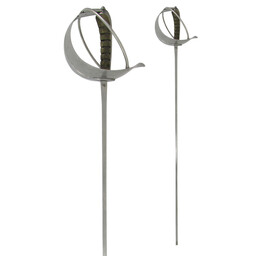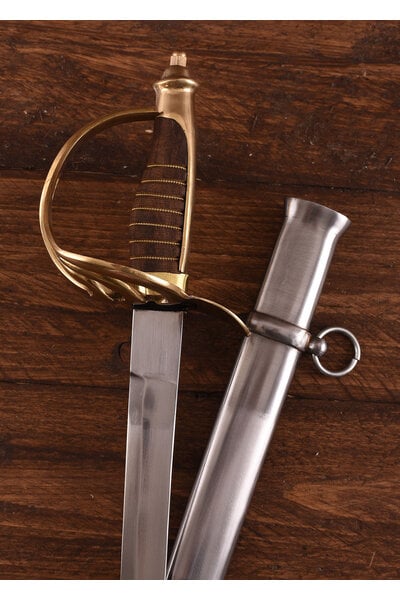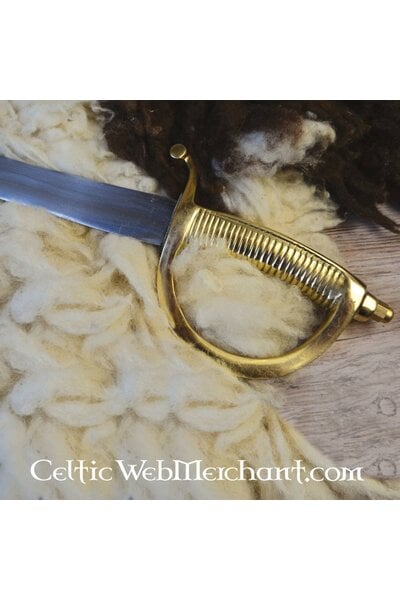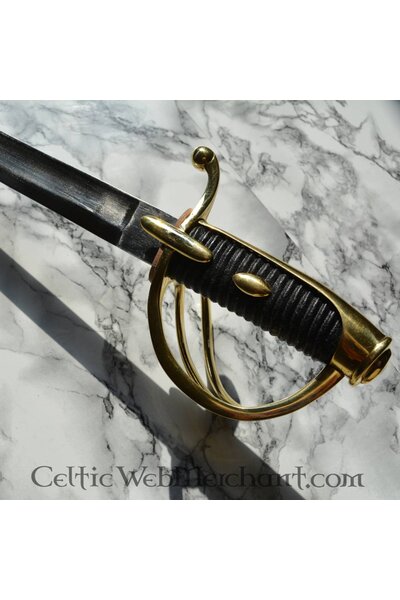Product description
This 19th century sabre is developed by Hanwei as a battle-ready sabre for 19th century fencing. Sabres like this were used since the 19th century and they were used until World War I by the European cavalry divisions. The Milanese fighting master Guiseppe Radaelli was presumably the man who developed the Radaelli sabre. Later on Salvatore Pecoraro perfectioned the weapon after which it was used in Rome at the martial art school.
The sabre is very flexible and the tip and blade are approx. 3 mm thick. The blade is made of a high quality carbon steel and can be replaced. This fencing sabre is 102,2 cm long, its blade is 85,7 cm and it weighs 652 grams.
Product details:
Length: 102.2 cm;
Blade length: 85.7 cm;
Grip length: 14.6 cm;
Weight: 652 g;
Steel type: 9260 carbon steel;
Edge: Blunt (3 mm battle-ready);
Tang construction: Full tang construction;
Pommel: Screwed;
Grip wrapping: Staal, Wood;
Based on a historic original: Yes;
Transport weight (in gram): 3000 *
This item is produced in limited quantities only. This means that every piece is unique. Sizes & finish may vary lightly from piece to piece.
We do not sell this product to customers under the age of 18. Click here for more information on the European arms acts.
Tip: How to adjust the finish of your armour and weaponry
Luxurious (polished)- polish the steel with metal polish or toothpaste. You can even give the item a mirror-like polish. Test on a small surface first!
Handmade (matte)- soak the steel in cola for 40 minutes to 20 hours. Check regularly and treat with black sandpaper.
Antique (patinated) leave the steel to rust for some time in a damp environment, preferably outside. Remove the red layer of rust, to reveal the corroded top layer.
Please note. After finishing the product yourself, the warranty and return right expire. Celtic WebMerchant is not responsible for the obtained result.
Packaged with 100% recycled material
When packaging this item, we exclusively use 100% recycled plastic and recycled paper/cardboard from FSC certified forests. We reuse a large part of the material directly without the intervention of a recycling process.
Recycle the material by separating your waste:
1. Cardboard: separate or reuse your paper.
2. Plastic cushions, clothing bags and plastic tape: separate or reuse your plastic. If possible, pierce the cushions with a volume reduction needle.
3. Paper packaging for jewelry and small items: these have a plastic inner layer. Remove these, then separate your paper and plastic.







